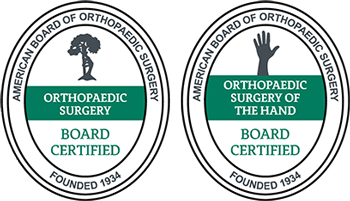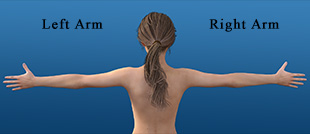The Importance of Hand Exercises
Exercise is important to your mind, body, and overall health. And, while many people take time to schedule a walk over the lunch hour, attend a yoga class before work, or hit the gym on the way home, they don’t always consider the importance of hand health. As with other types of exercise, exercising your hands improves blood flow, warms up the ligaments and muscles, and increases the circulation of synovial fluid to keep your joints lubricated and cushioned. Let’s look at how to perform hand exercises to improve your overall hand health.
The Importance of Performing Hand Exercises

Image via Flickr by nate steiner
You use your hands almost constantly, so you might think they get plenty of exercise just by the number of actions you perform daily. However, it’s helpful to do activities with your hands and wrists to offset the movements you make with them daily. For many people, their daily hand movements may be repetitive, leading to long-term hand and wrist problems. Doing hand exercises can offset some of the harmful effects of repeated actions, which may be performed at your job, working around your home, playing a sport, or simply using your smartphone.
Many people understand the importance of purposeful bodily movement, stretching, and strengthening exercises for other parts of their body but neglect to give the same care to their hands. If you think about how many tasks we perform with our hands, it becomes clear that keeping them strong and healthy is vital. We need to effectively hold, grip, and squeeze to perform a wide variety of tasks daily. Prioritizing hand health is also increasingly important as we age, as it’s common for hand function to decrease after the age of 65 without some early intervention.
Common Hand Conditions
Overuse of your hands and wrists can cause injuries due to repetitive strain, including:
- Ganglion cyst.
- Dupuytren’s contracture.
- Tendonitis.
- Mallet finger.
- Carpal tunnel syndrome.
- Thumb carpometacarpal joint dysfunction.
There are other reasons for hand pain, such as types of arthritis, which affect one in five American adults, causing persistent joint pain and inflammation. Arthritis can’t be eliminated through exercise, but even arthritic hands can benefit from stretching and strengthening exercises. However, it’s essential to consult your doctor about exercises to make sure you don’t cause further damage. This is also important if you have any current hand, wrist, or finger injury, no matter how minor, as your doctor may recommend physical therapy so you can be guided through appropriate exercise procedures.
Start by Stretching Your Hands
Stretching aims to help lengthen the muscles and tendons in the hand and wrist. Repetitive tasks, such as typing, using gardening tools, or working on an assembly line, can affect the muscles by shortening them and making them feel tight and painful. The following stretching exercises help loosen up the muscles, relieve pain, and benefit your hands’ range of motion.
Common Hand Stretching Exercises To Get You Started
Perform the following hand exercises gently until you feel the stretch, but not to the point that you experience any pain. This series of exercises can be especially beneficial for tight forearm muscles and tendonitis, both of which are common for people who work on computers. To get the most benefit, you should hold the positions for a count of fifteen to thirty seconds. If you experience pain, stop immediately, and rest your hands.
Prayer Wrist Stretch
Begin with this exercise to stretch your wrists.
- Put your hands together in a prayer position close to your face, palm to palm, without interlocking your fingers.
- Squeeze your elbows and forearms together, trying to get them to touch each other.
- Spread your elbows apart slowly, as you move your hands to your stomach, remaining in the prayer position. Push until you feel your wrists open up and stretch.
- Bring your elbows and forearms back together slowly as you return to the prayer position in front of your face.
- Repeat this exercise 10-15 times for a full stretch.
Palm Down Wrist Stretch
Perform the palm down wrist stretch one wrist at a time, remembering to repeat for both wrists.
- Extend one arm with your palm facing the floor.
- Bend your wrist, making your fingers point at the floor.
- Pull your fingers toward you, using your other hand. Go slow and gentle until you feel a stretch across the top of your wrist.
- Hold this position for five to 10 seconds.
- Repeat this exercise three to five times for each hand, alternating hands.
Palm Up Wrist Stretch
This exercise is the reverse of the palm down wrist stretch.
- Extend one arm with your palm facing the ceiling.
- Keeping your palm up, gently pull on your wrist with your other hand to make your fingers point to the floor. You will feel a stretch across the underside of your wrist.
- Hold this position for five to 10 seconds.
- Repeat this exercise three to five times for each hand, alternating hands.
Carpal Tunnel Tendon Glides
This exercise helps address current symptoms and prevent the symptoms of carpal tunnel syndrome from developing. It stimulates the tendons in the carpal tunnel passageway to keep them moving properly.
- Begin this exercise with your hand in a raised position, as if you’re asking someone to stop at a traffic light.
- Bring the tips of your fingers to the base of each finger by bending them downward.
- Make a half-fist, leaving your palm open, and squeeze that fist gently.
- Hold for three to five seconds.
- Open your hand back up to the starting stop-style position.
- Bend all four fingers together straight over your palm to be parallel with the floor.
- Next, bend your fingers so that they touch the base of your palm this time. Only the first and middle joints will be bent, leaving the top joint straight.
- Hold this position for three to five seconds.
- Repeat this exercise three times on each side.
These are just a few critical hand, wrist, and finger exercises you should perform regularly.
If you’re experiencing pain in your fingers, hands, or wrists, make an appointment with Dr. Knight of The Hand and Wrist Institute. Our team will conduct a thorough examination to provide you with a diagnosis and set up a suitable treatment plan. You can reach us at 855-558-4263 or schedule an appointment online. We’re here to answer any questions you may have and get you on the path to healing.

























